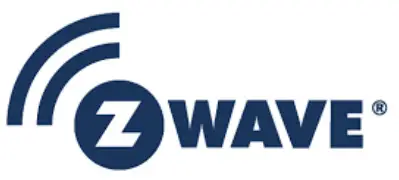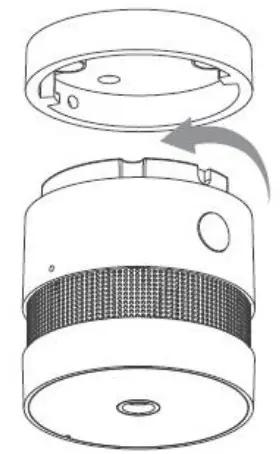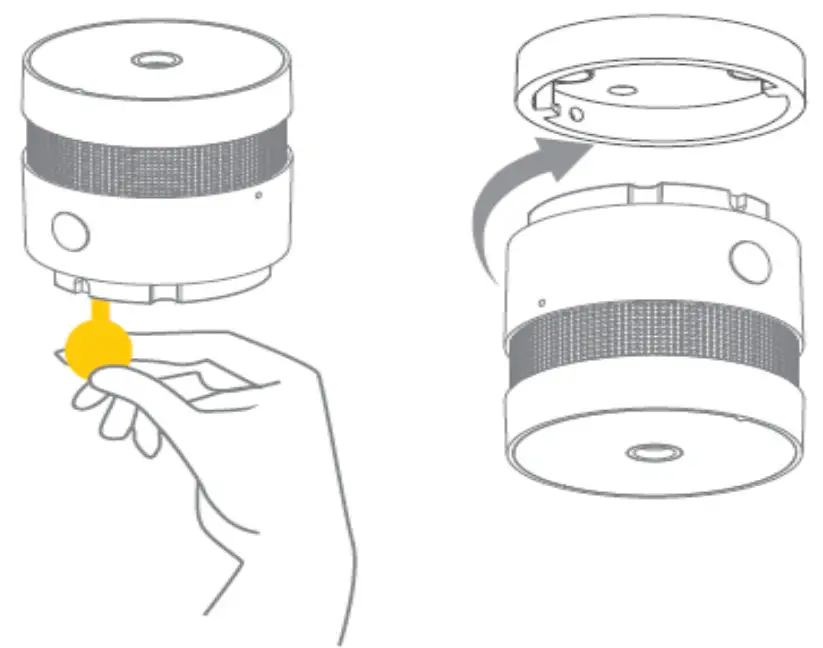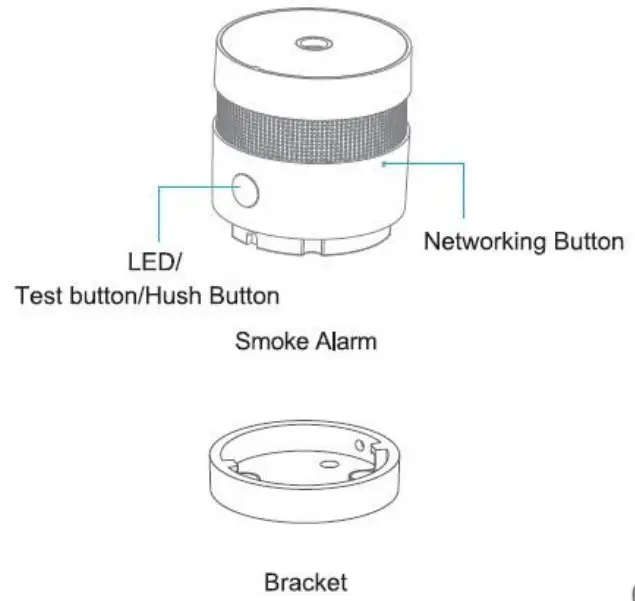
 HeimanSmart Smoke AlarmSKU: HEIEHS3SA
HeimanSmart Smoke AlarmSKU: HEIEHS3SA

Quickstart
This is a secure Alarm Sensor for Europe. Please make sure the internal battery is fully charged. – Press the Net_Button 3 times within 1.5s, Green LED is Blinking 3 times within 1 second.– If Inclusion Process is successful, Green led will turn off.
Important safety information
Please read this manual carefully. Failure to follow the recommendations in this manual may be dangerous or may violate the law. The manufacturer, importer, distributor and seller shall not be liable for any loss or damage resulting from failure to comply with the instructions in this manual or any other material. Use this equipment only for its intended purpose. Follow the disposal instructions. Do not dispose of electronic equipment or batteries in a fire or near open heat sources.
What is Z-Wave?
Z-Wave is the international wireless protocol for communication in the Smart Home. This device is suited for use in the region mentioned in the Quickstart section.

Z-Wave ensures reliable communication by reconfirming every message (two-way communication) and every mains powered node can act as a repeater for other nodes(meshed network) in case the receiver is not in the direct wireless range of the transmitter. This device and every other certified Z-Wave device can be used together with any other certified Z-Wave device regardless of brand and origin as long as both are suited for the same frequency range.If a device supports secure communication it will communicate with other devices secure as long as this device provides the same or a higher level of security. Otherwise, it will automatically turn into a lower level of security to maintain backward compatibility.For more information about Z-Wave technology, devices, white papers, etc. please refer to www.z-wave.info.
Product Description
The Smart Smoke Alarm adopts Z-Wave protocol, when the sensor detects smoke to the set level, it will issue an acoustic-optic alarm to alert the users and also send alarm notifications to the gateway immediately.It s suitable to be installed in the living room, office, warehouse, and etc.
Prepare for Installation / Reset
Please read the user manual before installing the product.In order to include (add) a Z-Wave device to a network, it must be in the factory default state. Please make sure to reset the device into factory default. You can do this by performing an Exclusion operation as described below in the manual. Every Z-Wave controller is able to perform this operation however it is recommended to use the primary controller of the previous network to make sure the very device is excluded properly from this network.Reset to factory default
This device also allows being reset without any involvement of a Z-Wave controller. This procedure should only be used when the primary controller is inoperable.– Long press Net-Button while installing batteries in HS1SA-Z.– Device Reset Locally notification is Transmitted.
Installation
– Flat ceiling mountingThe preferred location to install a smoke sensor is in the center of the ceiling because smoke, heat and combustible products rise to ceil and will laterally spread. Keep at least 30 cm distance from lights or decoration and at least 17cm away from walls and corners.– Sloping ceiling mountingIf the ceiling is sloping, please install the smoke sensor at a horizontal distance 90 cm away from the ceiling top.

Installation guide
 – Anticlockwise rotation the bracket out from the installation base.
– Anticlockwise rotation the bracket out from the installation base.
 – Fixed the bracket into the ceiling using srews.– Remove the double-sided adhesive and stick alarm into ceiling
– Fixed the bracket into the ceiling using srews.– Remove the double-sided adhesive and stick alarm into ceiling
 – Remove the battery insulating strip to make the detector on power and clockwise rotating alarm into the bracket.
– Remove the battery insulating strip to make the detector on power and clockwise rotating alarm into the bracket.
Inclusion/Exclusion
On factory default, the device does not belong to any Z-Wave network. The device needs to be added to an existing wireless network to communicate with the devices of this network.This process is called Inclusion.Devices can also be removed from a network. This process is called Exclusion. Both processes are initiated by the primary controller of the Z-Wave network. This controller is turned into exclusion respective inclusion mode. Inclusion and Exclusion is then performed doing a special manual action right on the device.Inclusion– Press the Net-Button 3 times within 1.5s, Green LED is Blinking 3 times within 1 second.– If Inclusion Process is successful, Green led will turn off.Exclusion– Press the Net_Button 3 times within 1.5s– If Exclusion Process is successful, Green led is Blinking 6 times, then turn off.
Product Usage

| State | LED | Sound Alarm |
| Standby | red LED flash every 53 seconds | NO |
| Test | red LED flash quickly | rapid”Di-Di-Di” |
| Alarm | red LED flash quickly | rapid”Di-Di-Di” |
| Hush | red LED flash every 10 seconds | NO |
| Low Power | red LED flash one time | “Di” every 53 seconds |
| Fault | red LED flash twice every 53 seconds | “Di-Di”for twice every53 seconds |
Communication to a Sleeping device (Wakeup)
This device is battery-operated and turned into a deep sleep state most of the time to save battery life. Communication with the device is limited. In order to communicate with the device, a static controller C is needed in the network. This controller will maintain a mailbox for the battery-operated devices and store commands that can not be received during the deep sleep state. Without such a controller, communication may become impossible, and/or the battery life is significantly decreased.
This device will wake up regularly and announce the wakeup state by sending out a so-called Wakeup Notification. The controller can then empty the mailbox. Therefore, the device needs to be configured with the desired wakeup interval and the node ID of the controller. If the device was included by a static controller this controller will usually perform all necessary configurations. The wakeup interval is a tradeoff between maximal battery lifetime and the desired responses of the device. To wake up the device please perform the following action: Wake up Notification is transmitted every 24 hours by default. -Wake up Notification is transmitted after Notification Report is Transmitted
Quick troubleshooting
Here are a few hints for network installation if things don’t work as expected.
- Make sure a device is in a factory reset state before including it. In doubt exclude before include.
- If inclusion still fails, check if both devices use the same frequency.
- Remove all dead devices from associations. Otherwise, you will see severe delays.
- Never use sleeping battery devices without a central controller.
- Don’t poll FLIRS devices.
- Make sure to have enough mains powered devices to benefit from the meshing
Association – one device controls another device
Z-Wave devices control other Z-Wave devices. The relationship between one device controlling another device is called association. In order to control a different device, the controlling device needs to maintain a list of devices that will receive controlling commands. These lists are called association groups and they are always related to certain events (e.g. button pressed, sensor triggers, …). In case the event happens all devices stored in the respective association group will receive the same wireless command, typically a ‘Basic Set’ Command.
Association Groups:
| Group Number | Maximum Nodes | Description |
| 1 | 5 | This is the Lifeline association group, Including command classes: B Reset Locally notification |
| 2 | 5 | This is the Root Device group, The Sensor sends a Basic Set comm switch, etc.) in response to events. The value of the Basic Set co using smoke or no smoke. |
Technical Data
| Dimensions | d= 48 x 52 mm |
| Weight | 51 gr |
| Hardware Platform | ZM5202 |
| EAN | 6.97E+12 |
| IP Class | IP 20 |
| Voltage | 3V |
| Device Type | Notification Sensor |
| Network Operation | Reporting Sleeping Slave |
| Z-Wave Version | 6.71.03 |
| Certification ID | ZC10-18076198 |
| Z-Wave Product Id | 0x0260.0x8002.0x1000 |
| Firmware Updatable | Updatable by Manufacturer |
| Supported Notification Types | Emergency AlarmSmoke Alarm |
| Color | White |
| Communications Protocol | Z-Wave Serial API |
| Frequency | Europe – 868,4 Mhz |
| Maximum transmission power | 5 mW |
Supported Command Classes
| • Association Grp Info• Association V2• Battery• Device Reset Locally• Manufacturer Specific V2• Multi-Channel Association V3• Notification V8 | • Powerlevel• Security 2• Supervision• Transport Service V2• Version V3• Wake Up V2• Zwaveplus Info V2 |
Controlled Command Classes
- Basic V2
Explanation of Z-Wave specific terms
- Controller — is a Z-Wave device with capabilities to manage the network. Controllers are typically Gateways, Remote Controls or battery-operated wall controllers.
- Slave — is a Z-Wave device without capabilities to manage the network. Slaves can be sensors, actuators, and even remote controls.
- Primary Controller — is the central organizer of the network. It must be a controller.There can be only one primary controller in a Z-Wave network.
- Inclusion — is the process of adding new Z-Wave devices into a network.
- Exclusion — is the process of removing Z-Wave devices from the network.
- Association — is a control relationship between a controlling device and a controlled device.
- Wakeup Notification — is a special wireless message issued by a Z-Wave device to announce that is able to communicate.
- Node Information Frame — is a special wireless message issued by a Z-Wave device to announce its capabilities and functions.
References
[xyz-ips snippet=”download-snippet”]
